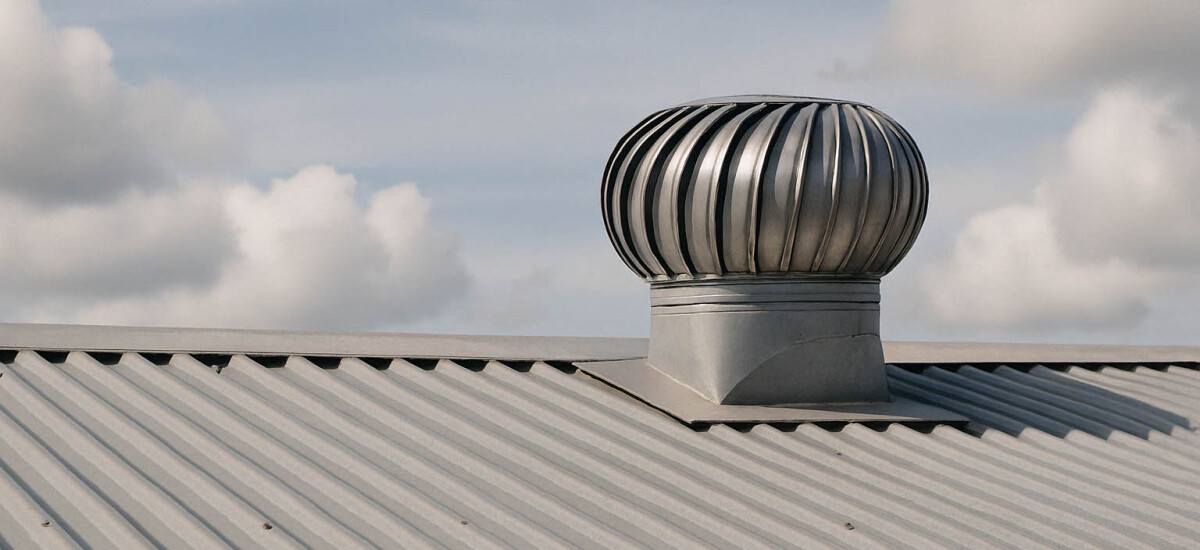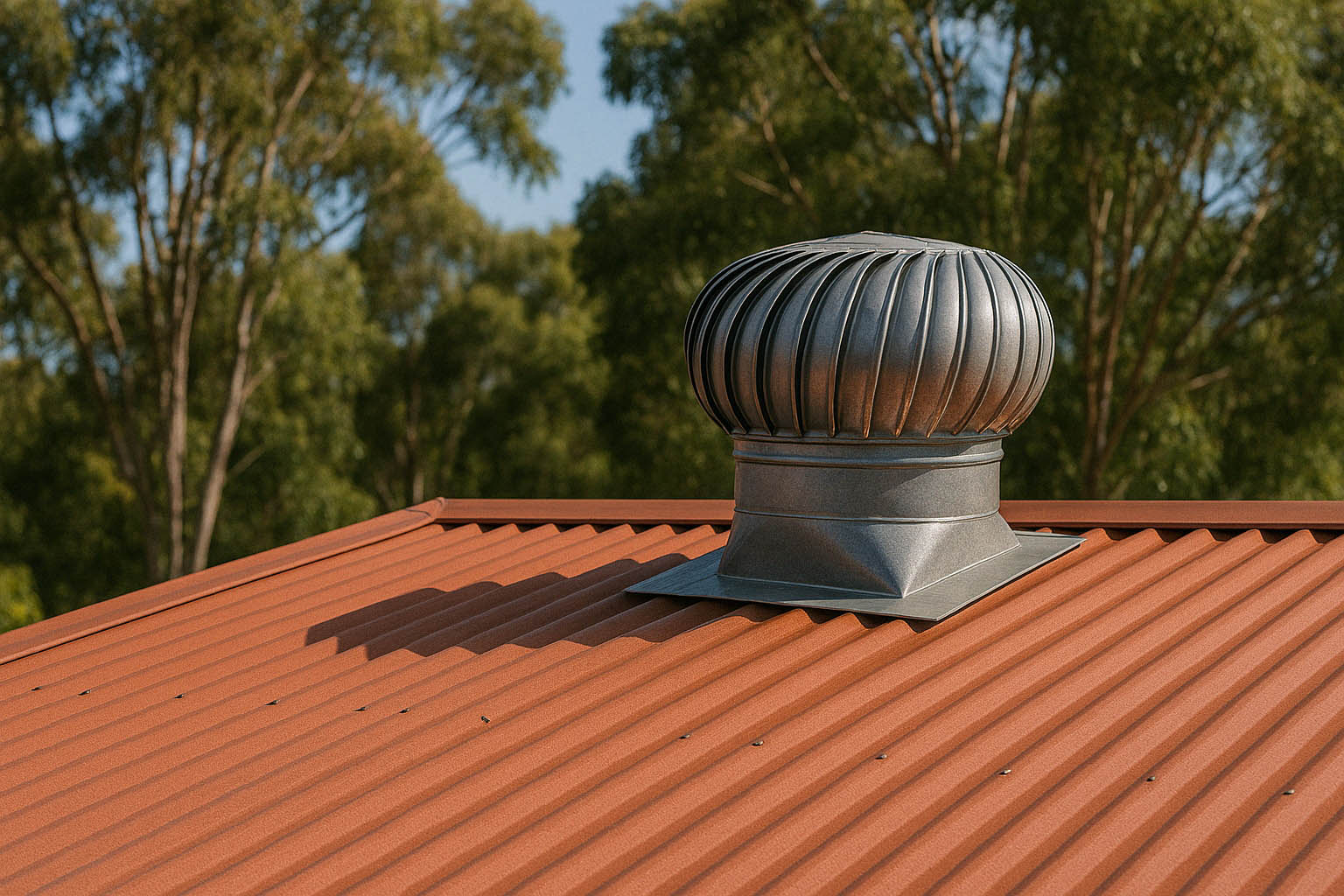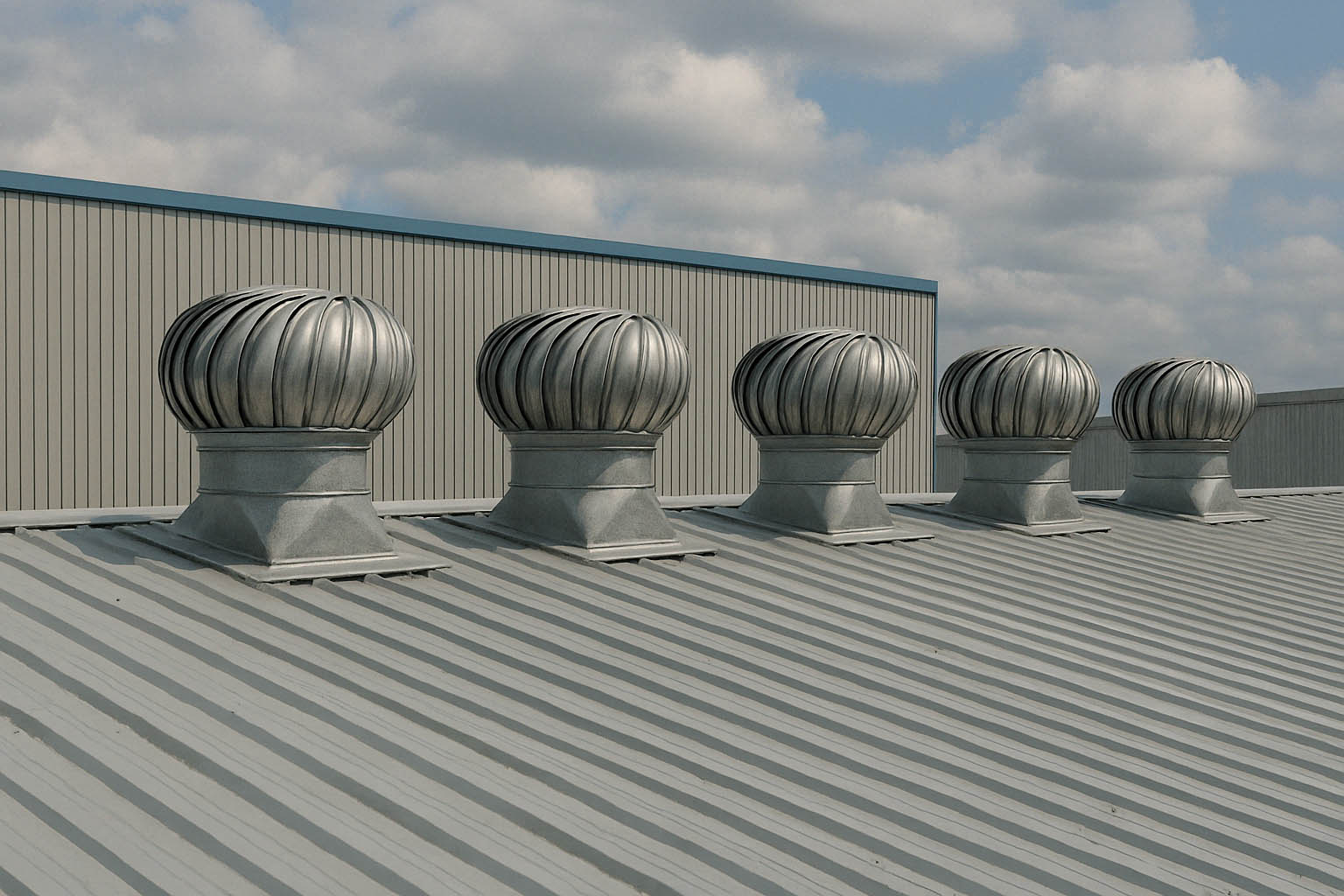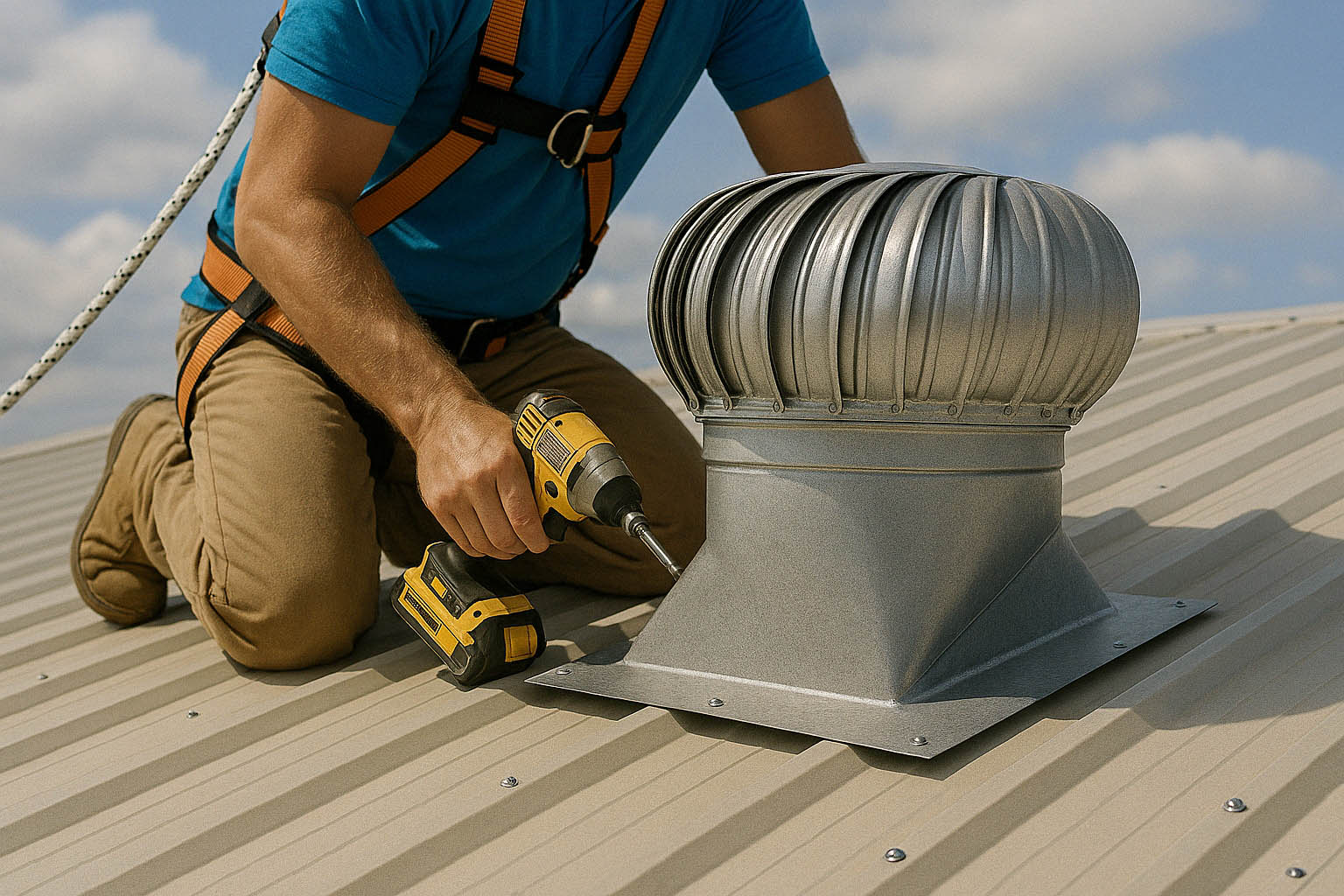Whirlybird Installation: Cost And Process

Whirlybird Installation: Cost And Process
Are you looking for a simple but cost-effective way to keep your home cool in the Sydney sun? A whirlybird might be just what you need! These spinning roof vents are a popular choice for homeowners who want to improve ventilation and reduce heat buildup in the attic without their energy bills skyrocketing. But if you haven’t heard of them before, you might be wondering—what exactly is a whirlybird, how much does it cost, and what does the installation process involve?
In this guide, we’ll break down everything you need to know about whirlybird vents, from the different types available to the benefits they offer! We’ll also cover how to figure out how many vents your home might need and what kind of investment you can expect in terms of cost and installation. Whether you are planning to install a whirlybird yourself or want to hire a professional, understanding whirlybirds and their installation process can help you make an informed decision.
So, if you’re ready to cool your home without using power, then read on! Let’s discover how a whirlybird can make a big difference in your home’s comfort and energy efficiency.
What Is A Whirlybird Vent?
A whirlybird—also known as a turbine vent—is a type of roof ventilation system that improves airflow in your attic or roof space. It’s a round, dome-shaped device with fins that spin when the wind blows. As the turbine rotates, it creates a vacuum-like effect that draws hot, stale air up and out of your roof cavity!
This natural ventilation helps control the temperature inside your home. This is especially useful in Australia's hot climate, where heat can build up under your roof. Whirlybirds don’t use any electricity; they’re totally wind-powered! This makes them an eco-friendly and low-maintenance solution for better air circulation in your home or business.
What Are The Benefits of Installing A Whirlybird?

These whirlybirds may look small, but they can make a big difference! There are many benefits that come from installing a whirlybird vent, but here are some of the top reasons why so many Australian homeowners are installing them:
Keep Your Home Cool
Whirlybirds help get rid of hot air trapped in your roof cavity, which stops heat from building up and transferring into your living space. By reducing the temperature in your attic, they help your home stay noticeably cooler, especially in summer, without relying on powered cooling systems like fans or air conditioners!
Reduce Mould & Mildew
Excess moisture in your roof space can lead to mould, mildew, and even long-term structural damage! Whirlybirds improve ventilation in your home, which helps to remove damp, humid air while also reducing condensation. This creates a drier environment, protecting your insulation, timber, and ceilings from moisture-related problems before they become expensive repairs!
Less Maintenance
Whirlybird vents are extremely low maintenance because they don’t have any electrical components, and they rely on wind power! They are also made from durable, weather-resistant materials. Air conditioning systems need regular servicing, filter changes, and potential repairs, but whirlybirds operate passively and rarely need upkeep! This makes them a cost-effective, hassle-free ventilation solution.
Lower Your Energy Costs
By naturally cooling your home and easing the burden on your air conditioning system, whirlybirds can help lower your electricity bills. They work around the clock without using power, making them an energy-efficient way to keep your home comfortable—especially during peak seasons when cooling costs are higher!
Improve Your Home’s Airflow
Good ventilation is key to a healthy, comfortable home. Whirlybirds draw out stale, stuffy air and allow fresh air to circulate through the roof space. This continuous airflow reduces indoor humidity and helps maintain better air quality, creating a fresher, more breathable environment inside your home year-round!
Are There Different Types of Whirlybirds?
Yes, there are a few different types of whirlybirds available! Each one is designed to suit different homes, climates, and ventilation needs. The most common type is the standard wind-driven whirlybird, which spins using natural wind power. These are cost-effective, easy to install, and great for general roof ventilation in most weather conditions.
For areas with low wind or higher humidity, ventilators with internal fans (also known as hybrid or powered whirlybirds) are available. These combine the traditional turbine design with an electric motor, which allows you to cool your home even on days when there isn’t any wind! They’re ideal if your home or business needs consistent ventilation.
You can also find industrial-grade whirlybirds built from heavy-duty materials like stainless steel or aluminium. These are best for large buildings, factories or commercial properties as they provide higher airflow capacity.
There are a variety of materials to choose from as well! Metal whirlybirds are highly durable and long-lasting, while plastic or polymer versions are lightweight and more affordable, though they work best in mild climates.
Choosing the right whirlybird depends on your roof size, local climate, and ventilation goals. It’s worth speaking with a roofing or ventilation specialist if you want to choose the most effective model for your home’s unique needs!

How Much Does A Whirlybird Cost?
It’s not possible to give a definite price because the cost of a whirlybird is going to differ depending on the type, material, and whether you choose DIY or professional installation! But on average, a standard wind-driven whirlybird costs between $60 and $150 per unit. If you go for a hybrid or powered model, prices can range from $200 to $400. Installation by a professional typically adds $150 to $300 per vent, depending on your roof type and location. While the initial cost is relatively low, you’ll see long-term savings on your energy bills and roof maintenance costs!
How Many Whirlybird Vents Do I Need?
The number of whirlybird vents your home needs depends on the size of your roof, the slope of it, your ceiling insulation, and your local climate! As a general rule of thumb, one standard whirlybird vent is recommended for every 90 to 100 square metres of roof space. For example, if you have an average single-storey home with a 200-square-metre roof, you would need two to three vents if you want to ensure optimal airflow.
However, if you live in a very hot or humid area, you can install even more whirlybirds to boost ventilation and manage heat and moisture effectively! Homes with poor roof insulation or minimal eave vents may also need more whirlybirds to ensure proper airflow throughout the roof cavity.
Keep in mind that installing too few vents can reduce their effectiveness, while too many can mess with the cycle of air. To get the balance right, it’s a good idea to speak with a roofing professional who can assess your home’s specific needs based on its layout and your ventilation goals!
What’s The Whirlybird Installation Process?

Installing a whirlybird is a relatively straightforward process, but it does involve working at height—so your safety should always come first! Whether you're doing it yourself or hiring a professional, the basic steps are the same. First, you’ll choose the right location on your roof—ideally near the ridge line, where hot air naturally rises. Next, a hole is cut into the roof sheeting, the vent base is inserted and sealed with flashing to prevent leaks, and finally, the whirlybird turbine is attached and securely fastened.
For anyone installing a whirlybird vent, whether DIY or professional, it’s crucial to follow the Australian government's working-at-height safety guidelines. Make sure you use a stable ladder, wear non-slip footwear, and have the proper safety equipment, including a harness and fall arrest system if required. Roof work can be dangerous, especially on steeper pitches or in windy conditions, so never attempt installation alone or without the right gear!
For peace of mind and professional results, many homeowners choose to hire a licensed installer. A pro can ensure your whirlybird is properly fitted, sealed, and positioned for maximum airflow!
Cool Your Home Without Power!
If you want your home to be comfortable and energy-efficient, whirlybird vents are a low-cost solution that brings so many benefits. By using nothing but the natural power of the wind, these amazing roof vents help remove hot, stale air from your roof cavity, lowering indoor temperatures and reducing the load on your air conditioning system. The result? A cooler home, better airflow, and fantastic savings on your energy bills, all without using a single watt of electricity!
Whirlybirds are affordable to buy, simple to install, and require very little maintenance over time. With options to suit different roof types, climates, and budgets, there's a model for every household! If you're dealing with summer heat, high humidity, or poor ventilation, installing one (or more) whirlybirds can make a noticeable difference in your home’s comfort and air quality.
If you're confident with DIY, just remember to prioritise safety when working at height. Otherwise, leave it to a professional to ensure everything’s done right. Then, once your whirlybird is installed, you can sit back and enjoy a cooler home without power!
The Australian Cleaning & Maintenance Blog Contact Us
Here you'll find tips and tricks to a better, cleaner and safer home. From cleaning hacks, tips, strategies and routines, this is your go-to for all things cleaning! Even though the domain contains the word gutter cleaning, the site is for all types of maintenance. If you want to submit an article, ask a question or express your undying love for us, please use the contact form below.
Address
Australia